Ashutosh Modi
MM-Telco: Benchmarks and Multimodal Large Language Models for Telecom Applications
Nov 17, 2025Abstract:Large Language Models (LLMs) have emerged as powerful tools for automating complex reasoning and decision-making tasks. In telecommunications, they hold the potential to transform network optimization, automate troubleshooting, enhance customer support, and ensure regulatory compliance. However, their deployment in telecom is hindered by domain-specific challenges that demand specialized adaptation. To overcome these challenges and to accelerate the adaptation of LLMs for telecom, we propose MM-Telco, a comprehensive suite of multimodal benchmarks and models tailored for the telecom domain. The benchmark introduces various tasks (both text based and image based) that address various practical real-life use cases such as network operations, network management, improving documentation quality, and retrieval of relevant text and images. Further, we perform baseline experiments with various LLMs and VLMs. The models fine-tuned on our dataset exhibit a significant boost in performance. Our experiments also help analyze the weak areas in the working of current state-of-art multimodal LLMs, thus guiding towards further development and research.
EtiCor++: Towards Understanding Etiquettical Bias in LLMs
Jun 10, 2025Abstract:In recent years, researchers have started analyzing the cultural sensitivity of LLMs. In this respect, Etiquettes have been an active area of research. Etiquettes are region-specific and are an essential part of the culture of a region; hence, it is imperative to make LLMs sensitive to etiquettes. However, there needs to be more resources in evaluating LLMs for their understanding and bias with regard to etiquettes. In this resource paper, we introduce EtiCor++, a corpus of etiquettes worldwide. We introduce different tasks for evaluating LLMs for knowledge about etiquettes across various regions. Further, we introduce various metrics for measuring bias in LLMs. Extensive experimentation with LLMs shows inherent bias towards certain regions.
CoMuMDR: Code-mixed Multi-modal Multi-domain corpus for Discourse paRsing in conversations
Jun 10, 2025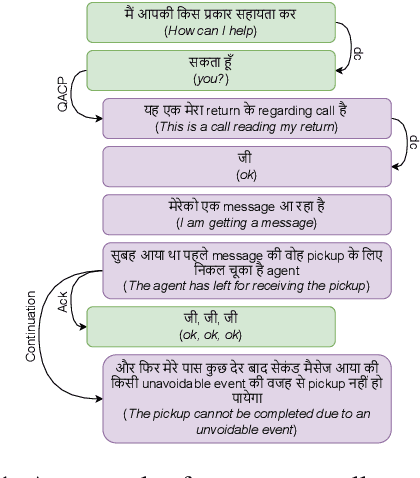
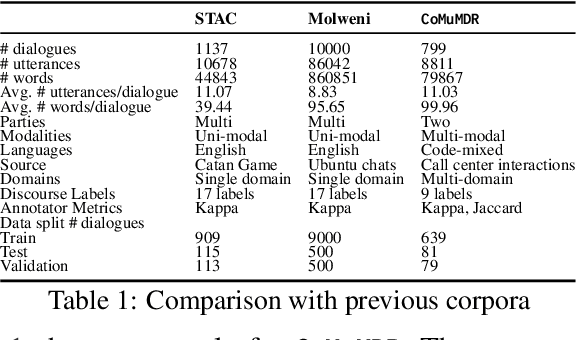
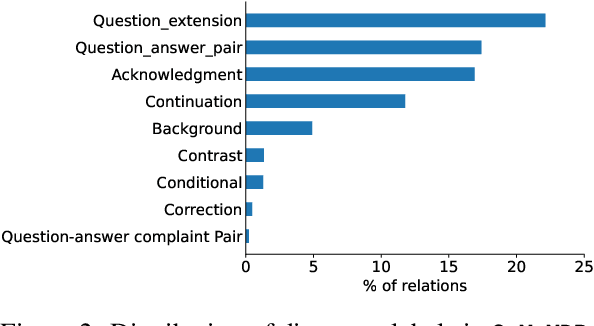
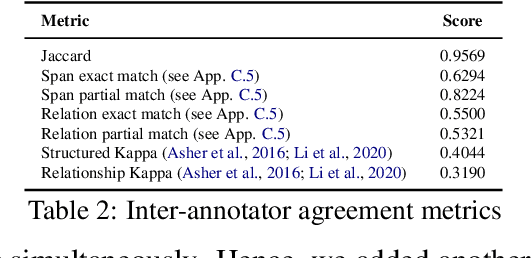
Abstract:Discourse parsing is an important task useful for NLU applications such as summarization, machine comprehension, and emotion recognition. The current discourse parsing datasets based on conversations consists of written English dialogues restricted to a single domain. In this resource paper, we introduce CoMuMDR: Code-mixed Multi-modal Multi-domain corpus for Discourse paRsing in conversations. The corpus (code-mixed in Hindi and English) has both audio and transcribed text and is annotated with nine discourse relations. We experiment with various SoTA baseline models; the poor performance of SoTA models highlights the challenges of multi-domain code-mixed corpus, pointing towards the need for developing better models for such realistic settings.
LoRMA: Low-Rank Multiplicative Adaptation for LLMs
Jun 09, 2025Abstract:Large Language Models have shown remarkable capabilities in the NLP domain. Their effectiveness can mainly be attributed to their ability to adapt to an array of downstream tasks. However, generally, full fine-tuning is a computationally expensive job. To mitigate this, many techniques have been developed that prime efficiency, a prominent one being Low-Rank Adaptation (LoRA). However, LoRA and its variants employ re-parametrized additive updates. In this paper, we propose Low-Rank Multiplicative Adaptation (LoRMA), which shifts the paradigm of additive updates to a richer space of matrix multiplicative transformations. We tackle challenges such as computational complexity and rank bottleneck of matrix multiplication by effectively re-ordering operations and introducing rank inflation strategies. We conduct extensive experiments to demonstrate the effectiveness of our approach in terms of various evaluation metrics.
Towards Quantifying Commonsense Reasoning with Mechanistic Insights
Apr 14, 2025Abstract:Commonsense reasoning deals with the implicit knowledge that is well understood by humans and typically acquired via interactions with the world. In recent times, commonsense reasoning and understanding of various LLMs have been evaluated using text-based tasks. In this work, we argue that a proxy of this understanding can be maintained as a graphical structure that can further help to perform a rigorous evaluation of commonsense reasoning abilities about various real-world activities. We create an annotation scheme for capturing this implicit knowledge in the form of a graphical structure for 37 daily human activities. We find that the created resource can be used to frame an enormous number of commonsense queries (~ 10^{17}), facilitating rigorous evaluation of commonsense reasoning in LLMs. Moreover, recently, the remarkable performance of LLMs has raised questions about whether these models are truly capable of reasoning in the wild and, in general, how reasoning occurs inside these models. In this resource paper, we bridge this gap by proposing design mechanisms that facilitate research in a similar direction. Our findings suggest that the reasoning components are localized in LLMs that play a prominent role in decision-making when prompted with a commonsense query.
COLD: Causal reasOning in cLosed Daily activities
Nov 29, 2024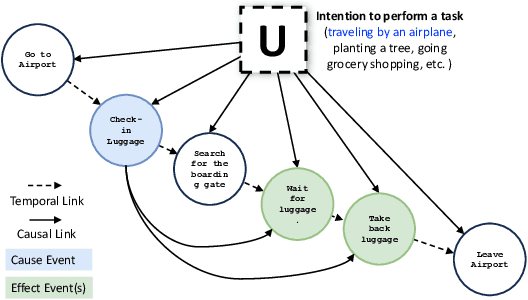
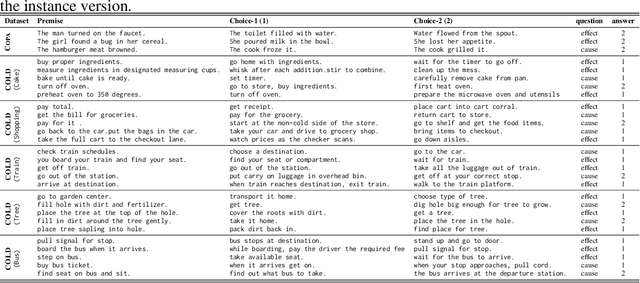
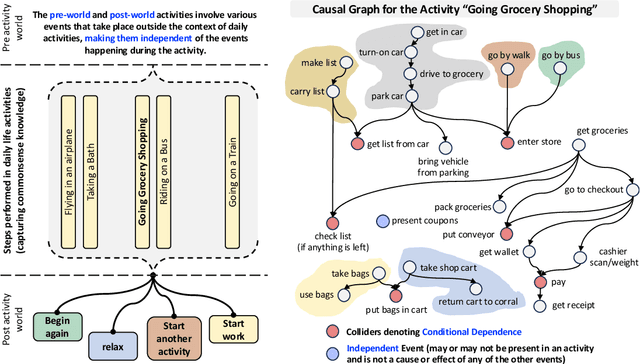

Abstract:Large Language Models (LLMs) have shown state-of-the-art performance in a variety of tasks, including arithmetic and reasoning; however, to gauge the intellectual capabilities of LLMs, causal reasoning has become a reliable proxy for validating a general understanding of the mechanics and intricacies of the world similar to humans. Previous works in natural language processing (NLP) have either focused on open-ended causal reasoning via causal commonsense reasoning (CCR) or framed a symbolic representation-based question answering for theoretically backed-up analysis via a causal inference engine. The former adds an advantage of real-world grounding but lacks theoretically backed-up analysis/validation, whereas the latter is far from real-world grounding. In this work, we bridge this gap by proposing the COLD (Causal reasOning in cLosed Daily activities) framework, which is built upon human understanding of daily real-world activities to reason about the causal nature of events. We show that the proposed framework facilitates the creation of enormous causal queries (~ 9 million) and comes close to the mini-turing test, simulating causal reasoning to evaluate the understanding of a daily real-world task. We evaluate multiple LLMs on the created causal queries and find that causal reasoning is challenging even for activities trivial to humans. We further explore (the causal reasoning abilities of LLMs) using the backdoor criterion to determine the causal strength between events.
Towards Robust Evaluation of Unlearning in LLMs via Data Transformations
Nov 23, 2024
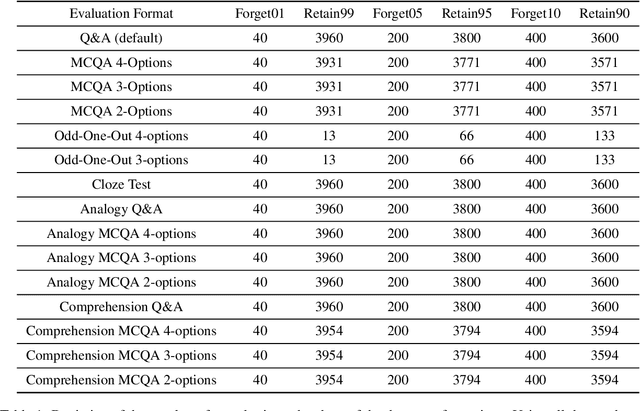

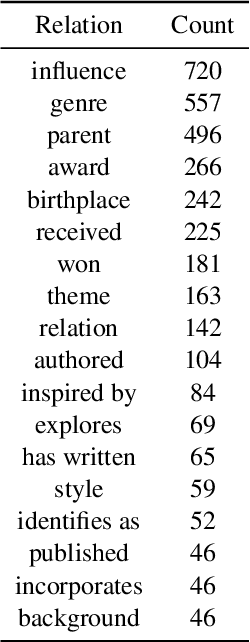
Abstract:Large Language Models (LLMs) have shown to be a great success in a wide range of applications ranging from regular NLP-based use cases to AI agents. LLMs have been trained on a vast corpus of texts from various sources; despite the best efforts during the data pre-processing stage while training the LLMs, they may pick some undesirable information such as personally identifiable information (PII). Consequently, in recent times research in the area of Machine Unlearning (MUL) has become active, the main idea is to force LLMs to forget (unlearn) certain information (e.g., PII) without suffering from performance loss on regular tasks. In this work, we examine the robustness of the existing MUL techniques for their ability to enable leakage-proof forgetting in LLMs. In particular, we examine the effect of data transformation on forgetting, i.e., is an unlearned LLM able to recall forgotten information if there is a change in the format of the input? Our findings on the TOFU dataset highlight the necessity of using diverse data formats to quantify unlearning in LLMs more reliably.
Generation and De-Identification of Indian Clinical Discharge Summaries using LLMs
Jul 08, 2024



Abstract:The consequences of a healthcare data breach can be devastating for the patients, providers, and payers. The average financial impact of a data breach in recent months has been estimated to be close to USD 10 million. This is especially significant for healthcare organizations in India that are managing rapid digitization while still establishing data governance procedures that align with the letter and spirit of the law. Computer-based systems for de-identification of personal information are vulnerable to data drift, often rendering them ineffective in cross-institution settings. Therefore, a rigorous assessment of existing de-identification against local health datasets is imperative to support the safe adoption of digital health initiatives in India. Using a small set of de-identified patient discharge summaries provided by an Indian healthcare institution, in this paper, we report the nominal performance of de-identification algorithms (based on language models) trained on publicly available non-Indian datasets, pointing towards a lack of cross-institutional generalization. Similarly, experimentation with off-the-shelf de-identification systems reveals potential risks associated with the approach. To overcome data scarcity, we explore generating synthetic clinical reports (using publicly available and Indian summaries) by performing in-context learning over Large Language Models (LLMs). Our experiments demonstrate the use of generated reports as an effective strategy for creating high-performing de-identification systems with good generalization capabilities.
IL-TUR: Benchmark for Indian Legal Text Understanding and Reasoning
Jul 07, 2024Abstract:Legal systems worldwide are inundated with exponential growth in cases and documents. There is an imminent need to develop NLP and ML techniques for automatically processing and understanding legal documents to streamline the legal system. However, evaluating and comparing various NLP models designed specifically for the legal domain is challenging. This paper addresses this challenge by proposing IL-TUR: Benchmark for Indian Legal Text Understanding and Reasoning. IL-TUR contains monolingual (English, Hindi) and multi-lingual (9 Indian languages) domain-specific tasks that address different aspects of the legal system from the point of view of understanding and reasoning over Indian legal documents. We present baseline models (including LLM-based) for each task, outlining the gap between models and the ground truth. To foster further research in the legal domain, we create a leaderboard (available at: https://exploration-lab.github.io/IL-TUR/) where the research community can upload and compare legal text understanding systems.
iSign: A Benchmark for Indian Sign Language Processing
Jul 07, 2024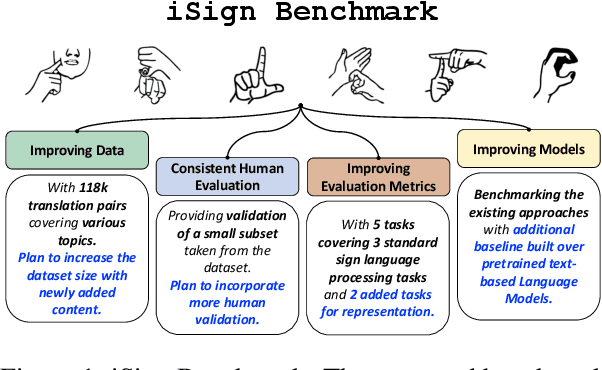
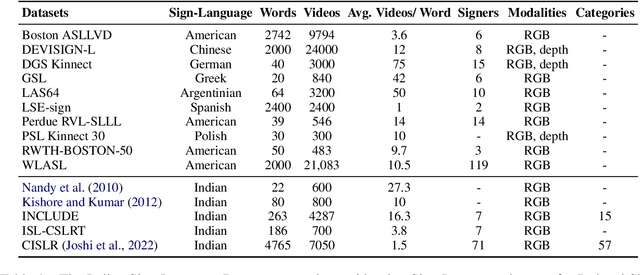

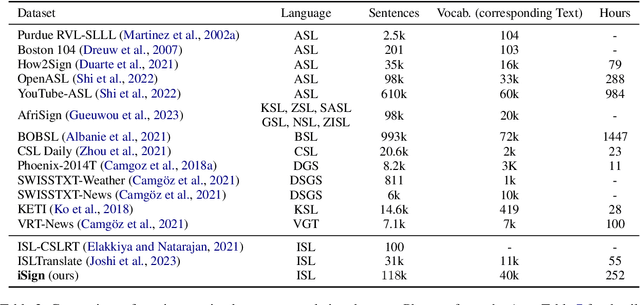
Abstract:Indian Sign Language has limited resources for developing machine learning and data-driven approaches for automated language processing. Though text/audio-based language processing techniques have shown colossal research interest and tremendous improvements in the last few years, Sign Languages still need to catch up due to the need for more resources. To bridge this gap, in this work, we propose iSign: a benchmark for Indian Sign Language (ISL) Processing. We make three primary contributions to this work. First, we release one of the largest ISL-English datasets with more than 118K video-sentence/phrase pairs. To the best of our knowledge, it is the largest sign language dataset available for ISL. Second, we propose multiple NLP-specific tasks (including SignVideo2Text, SignPose2Text, Text2Pose, Word Prediction, and Sign Semantics) and benchmark them with the baseline models for easier access to the research community. Third, we provide detailed insights into the proposed benchmarks with a few linguistic insights into the workings of ISL. We streamline the evaluation of Sign Language processing, addressing the gaps in the NLP research community for Sign Languages. We release the dataset, tasks, and models via the following website: https://exploration-lab.github.io/iSign/
 Add to Chrome
Add to Chrome Add to Firefox
Add to Firefox Add to Edge
Add to Edge